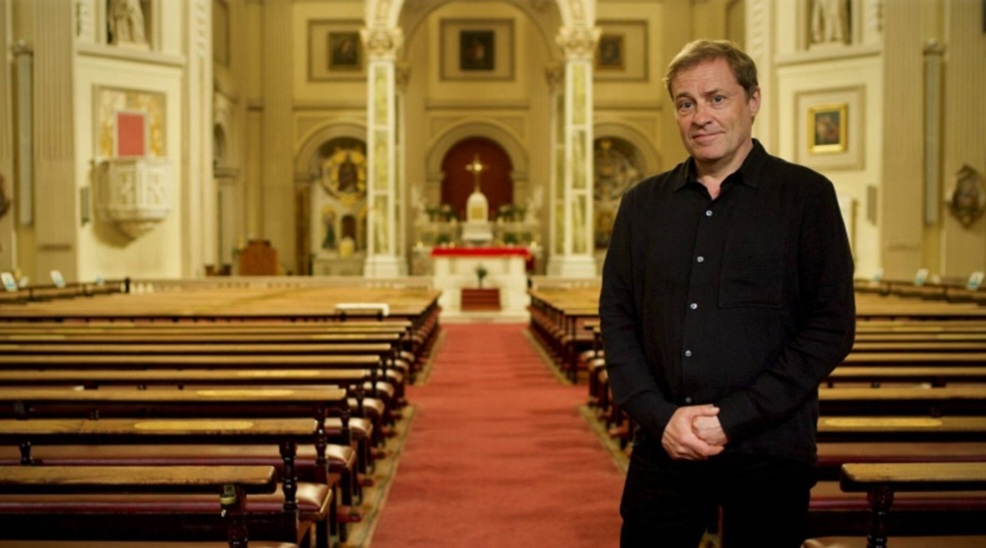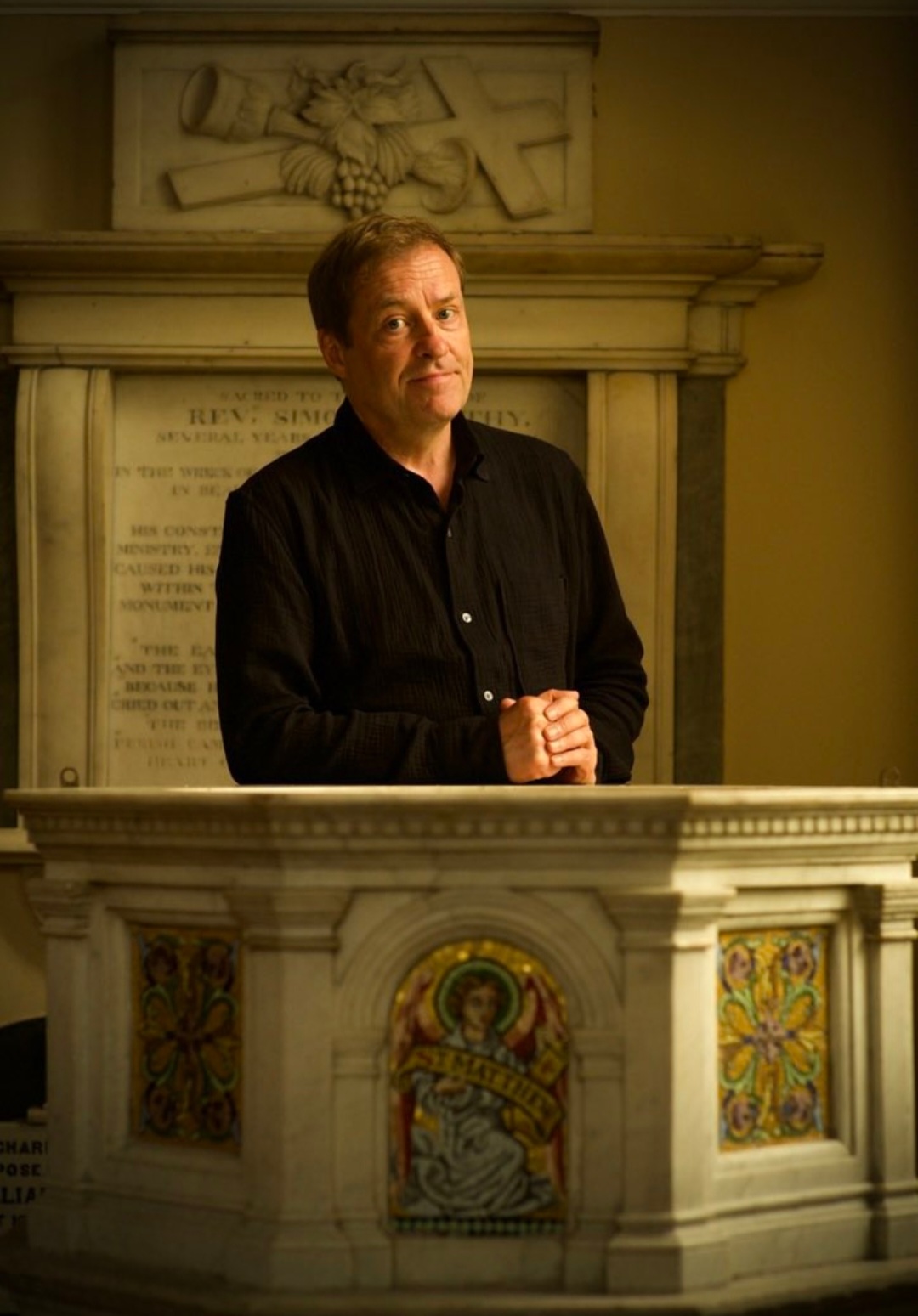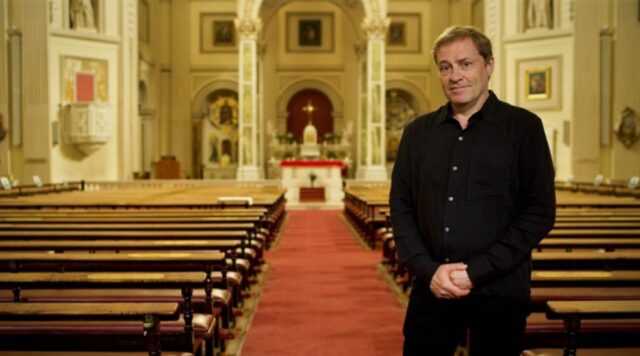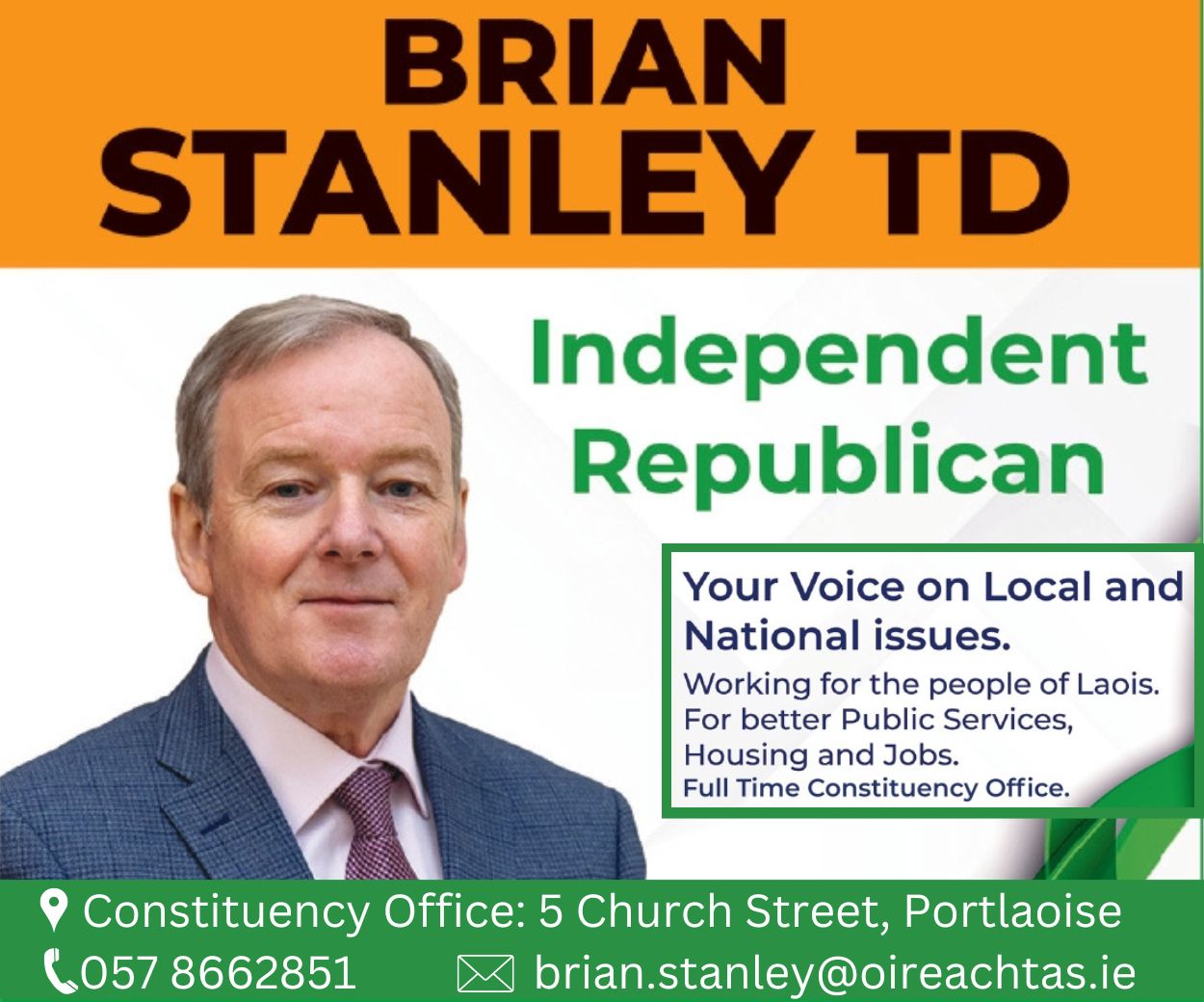Ardal O’Hanlon, played one of the most famous fictional priests of all time as Father Ted’s lovably dim Dougal McGuire.
He was hilarious, but there was always more to Ted than laughs.
Dosed with absurdity, salted with satire, the sitcom opened a window into the Irish soul.
O’Hanlon presented an absorbing documentary recently about the decline and perhaps extinction of the Irish clergy.
‘The Last Priests of Ireland‘ aired on RTÉ 1 on Monday and Tuesday, January 15 and 16.
But the documentary has the broader objective of placing the priesthood in the context of the long history of Irish spirituality.
The conclusion is that the hegemony of priests was but a passing phase.
The number of priests and members of religious orders in Ireland has dropped by 70% since 1970.
In the past three years more than 25% of all priests in Ireland have died.
The average age of priests has risen substantially in that time; it is now well above 70.
Add to those problems of health and morale, and you have a serious difficulty with staffing, to name just one.
I currently hold the responsibility as parish priest of three parishes. Clustering parishes has become the norm.
In our diocese many clergy generously continue holding active posts of responsibility well into their 80s.
I often marvel at these elderly priests being so selfless despite the burden that comes with old age.
However, does the institution think it is acceptable that this responsibility is inflicted on such men to be acceptable?
The volume of work has grown, but the numbers available to do it have declined. Statistics and anecdotal evidence could be multiplied, but it is unnecessary.

This situation did not develop overnight. A substantial decline in vocations began as far back as thirty years ago.
There was no shortage of voices calling for action, for a review of the way that we are as church; for the training and empowerment of lay-people, for the creation of structures of dialogue, participation, and subsidiarity.
In response, some wagged a finger in reproof, saying, ‘God will provide’.
That was to evade the issue, and the decline continued. Regrettably, little of the above was done. A crash landing, therefore, seems more likely than a soft one.
If you don’t learn lessons the easy way, you are taught the hard way.
If you don’t take the initiative, you will be boxed into a corner by circumstances beyond your control, and with no room for manoeuvre.
If you don’t reform, you precipitate a revolution – or a collapse.
Perhaps it is providential. The model of church – that is to say, the particular way of being the church – we have lived with in Europe for centuries is on its last legs and, most likely, will collapse.

What will follow?
It is impossible to know, and speculation about the future usually gets it wrong. What may emerge will be a new model of church, more democratic and less hierarchical, more charismatic and less structured, more lay and less clerical, smaller and less concerned with numbers.
Out of that, a new understanding of the Christian faith may also emerge. In much of the world, the Catholic Church turned the faith into a control system.
That was to repeat the Pharisees’ mistake, and to miss the point that Jesus was trying to free people from that.
If the faith is seen as prophetic and motivating, focusing on relationships, enabling people to realize their humanity, it will be true to itself and be welcomed.
Otherwise, it will wither, and have to await a better day.
Few priests does not mean no priests – rather it may mean moving to a different understanding of priesthood – one where the emphasis is on empowerment and enablement and getting local eucharistic communities to take responsibility for managing themselves, with all that means – in which case we may not need so many priests.
Yes, no reason why we can’t have married priests – let’s face it – we had them before – but not to simply prop up the existing system – as part of the next phase of development which our Saviour wills.
It means quite a few changes both theologically as well as pastorally, which it is understandable that some priests (and even more Bishops) will find difficult – but now is the time to start thinking, planning and preparing.
We have plenty of examples from earlier periods in the Church to draw on.
But this does not mean turning the clock back – rather taking the learning and applying it to the present and future.
“God gave us brains – and he expects us to use them”!
In my opinion, this continued disconnect from lived reality is at the heart of the so-called “vocations crisis”.
Reality is where the Truth lives – and a male, celibate, hierarchical priesthood no longer rings true. In the words of Paul Brady, it is “trying to reach the future through the past!”
Yes, we need “priests”, but a reimagined priesthood, freed from the shackles of history.
A priesthood where people who are trained in spirituality and an understanding of the Gospel message, who are willing to work in their community as facilitators at community gatherings to celebrate “Eucharist”, a celebration of the universal presence of a loving God, to forgive, to heal, to mourn.
These people would be drawn from their own community of faith, not separate from, nor above it (celibacy and gender exclusivity are weapons of power & authority).
As a Church, we need to step into the deep, to ask the pertinent questions, to have the ears to listen to the prophetic voices of our time.
We are weighed down by so much historical baggage – we need a new freedom.
I hold firm in the hope that Christ continues to be present and available to us all. His promise “I am with you always”
SEE ALSO – Outrage as elevator in New Portlaoise Library found to be unsuitable for wheelchair users


























